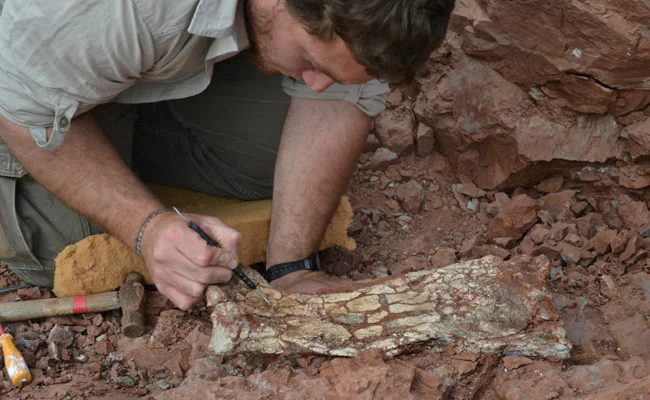“Dragon Of Death” Flying Reptile Found. It Lived 86 Million Years Ago
The fossilised remains of a huge flying reptile dubbed the ‘Dragon of Death’ – which lived alongside the dinosaurs 86 million years ago – have been unearthed in Argentina. Measuring about 30ft (9m) long, it is the largest pterosaur discovered in South America and one of the biggest flying vertebrates to have ever lived.
Researchers said the ‘beast’ would likely have been a frightening sight as it hunted its prey from prehistoric skies.
It is estimated the fearsome species lived at least 20 million years before an asteroid impact on what is now Mexico’s Yucatan peninsula wiped out about three-quarters of life on the planet 66 million years ago.



A team of palaeontologists discovered the fossils of the newly-coined Thanatosdrakon amaru in the Andes mountains in Argentina’s western Mendoza province.
Project leader Leonardo Ortiz said the fossil’s never-before-seen characteristics required a new genus and species name, with the latter combining ancient Greek words for death (Thanatos) and dragon (drakon).
‘It seemed appropriate to name it that way,’ said Ortiz, of the National University of Cuyo in Mendoza.
‘It’s the dragon of death.’
The reptile was as long as a yellow school bus with an estimated wingspan of around 30ft (9m).
Some 40 bones and fragments were unearthed by the team of palaeontologists.



They said the fossil’s huge bones classify the new species as the largest pterosaur yet discovered in South America and one of the largest found anywhere in the world.
The researchers found that the rocks preserving the reptile’s remains dated back 86 million years to the Cretaceous period, which lasted from about 145 to 66 million years ago.
‘We don’t have a current record of any close relative that even has a body modification similar to these beasts,’ said Ortiz.
The researchers wrote in their paper that Thanatosdrakon ‘is the largest pterosaur that crossed the Cretaceous skies of South America discovered so far.
They said the discovery would allow scientists ‘to expand the knowledge about the anatomy of this diverse group of pterosaurs’.
The study has been published in the journal Cretaceous Research.
